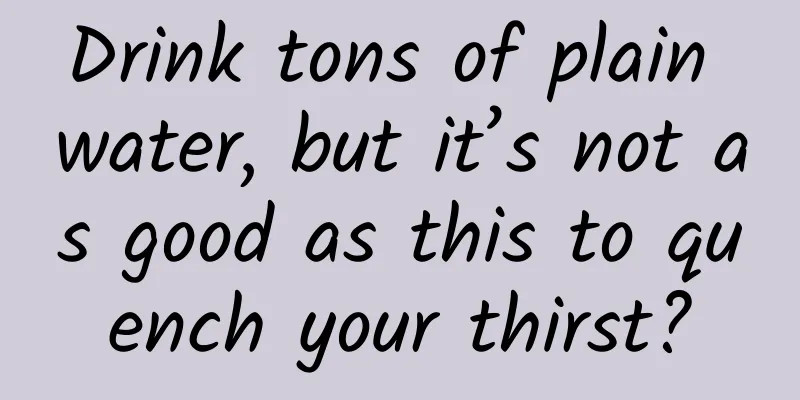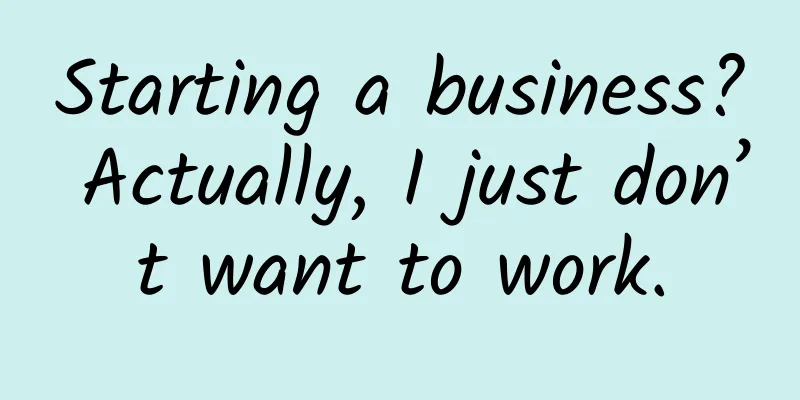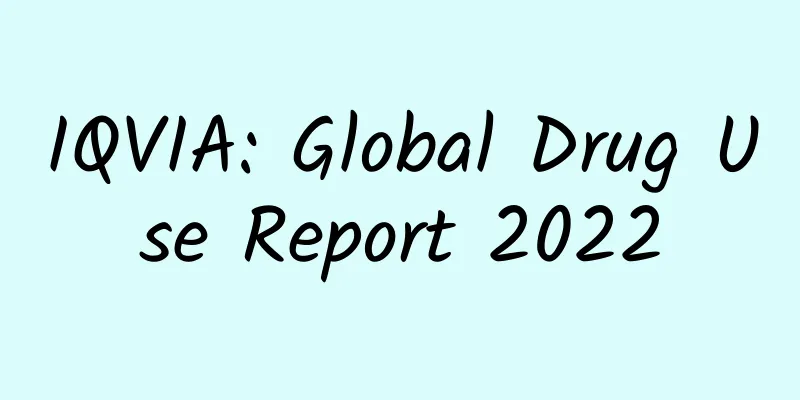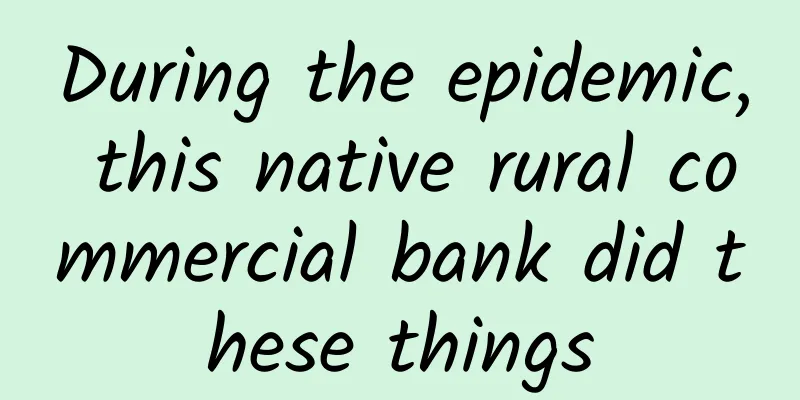Drink tons of plain water, but it’s not as good as this to quench your thirst?

|
Audit expert: Wang Guoyi Postdoctoral fellow in Nutrition and Food Safety, China Agricultural University The summer heat is still here, the sun is scorching, and sweat is pouring out like a spring. People are looking for a thirst-quenching drink to relieve their hot body and mind. In this hot season, what is the most thirst-quenching drink? When it comes to this, people first think of iced drinks. This kind of drink is like a breeze in the hot summer, which can instantly relieve our thirsty throats and dispel the unbearable heat waves. But health experts will also say that it is boiled water. The more you drink, the thirstier you become. However, what you may not know is that the most thirst-quenching drink is not ice cola or water. Source: Pexels 1Why can iced carbonated drinks relieve thirst? For many people, the first sip of ice cola is really satisfying. Coke and ice cola are definitely two different drinks. When ice cola returns to room temperature, it changes from a refreshing drink to a sweet sugary drink. So is the "thirst quenching" effect of ice cola real, or is it just a psychological effect of cooling down? In 2016, sensory scientists conducted a comparative experiment, asking 100 volunteers who met the experimental conditions to drink beverages of different types and temperatures to test which type of beverage is more thirst-quenching. Source丨Oral Cooling and Carbonation Increase the Perception of Drinking and Thirst Quenching in Thirsty Adults. The experimental results showed that the volunteers in the cold drink group felt thirsty after drinking about 160ml of drink on average, while the volunteers in the room temperature group felt thirsty after drinking about 240ml of drink on average. Why are cold drinks easier to quench thirst? The researchers speculated that it may be because cold drinks below our body temperature will stimulate the sensory system after entering the human body, allowing the brain to receive the signal that we have drunk a lot of water, and the "tricked" brain will make us feel thirsty. Source: Pexels So to a certain extent, even if you hold an ice cube in your mouth, your thirst will be relieved. Some people may wonder, they are all cold drinks, why do ice water and ice coffee not quench your thirst as much as ice cola and ice sparkling water? This is where the role of bubbles comes into play. If room temperature cola can barely be considered a bottom-tier choice in the cola family, then cola that has lost all its gas must be expelled from the cola family. In the same experiment, the scientists also arranged another set of experiments. For room temperature drinks, the carbonated group felt thirsty after drinking about 140 ml on average, while the non-carbonated group felt thirsty after drinking 210 ml on average; for low temperature drinks, the carbonated group felt thirsty after drinking about 120 ml on average, while the non-carbonated group felt thirsty after drinking about 180 ml on average. In other words, whether iced or at room temperature, carbonated drinks are more thirst-quenching than still water. Source丨Oral Cooling and Carbonation Increase the Perception of Drinking and Thirst Quenching in Thirsty Adults. It can be seen that in addition to the influence of temperature, whether the water is "carbonated" (with carbonic acid) will also affect the brain's judgment of the amount of water consumed. The researchers speculate that the reason is the same as low temperature, which is the sensory stimulation of the mouth, affecting the brain's judgment of the amount of water consumed. 2What is the hydration index? When we drink iced carbonated drinks, we trick our brains into giving us a "thirst quenching" signal, but this is ultimately just an illusion and does not actually quench our thirst. So how do we measure the actual thirst-quenching effect of a drink? Source: Pexels First of all, we need to understand what changes will occur in the human body when the body is "thirsty". This mechanism is relatively complicated, but it is clear that the osmotic pressure of the blood will definitely fluctuate significantly. When the body is dehydrated, the water in the blood decreases, but the content of substances such as protein and sodium ions does not decrease, so the relevant concentration becomes relatively higher, resulting in an increase in the osmotic pressure of the blood. Therefore, when we are thirsty, the drinks we choose to consume need to be able to replenish enough water to restore the osmotic pressure of the blood to normal levels. It can also be understood that drinks that can "store" more water in the human body for a longer time are more thirst-quenching. In order to measure the "water storage" capacity of beverages, researchers introduced the concept of "Beverage Hydration Index" (BHI), which is to use plain water as a benchmark and set its BHI to 1, and compare other beverages with it, that is, "the cumulative urine volume after drinking a certain amount of plain water in a fixed time" divided by "the cumulative urine volume after drinking a certain amount of a certain beverage." This concept is an evaluation method based on the urine volume within a period of time after drinking a beverage: less urine means more fluid is absorbed and retained, and better hydration, so a higher BHI means that more water is retained in the body compared to drinking the same volume of pure water. Comparison of 3 beverage hydration capabilities After introducing the concept of hydration index, the researchers conducted comparative experiments on the issue that we are most concerned about: which drinks are better at replenishing water and quenching thirst. The researchers selected 13 kinds of beverages that are commonly consumed in daily life for the experiment, including cola, sparkling water, orange juice, beer, black tea, coffee, milk, oral rehydration salts (solution, hereinafter referred to as "oral rehydration salts"), purified water, etc. The BHI value has excluded the difference in water content of beverages, thus reflecting the effect of the beverage itself on hydration status. Source: A randomized trial to assess the potential of different beverages to affect hydration status: development of a beverage hydration index. The results showed that oral rehydration salts, skim milk and whole milk were the most prominent categories in terms of hydration effects. The BHI of other beverages were not significantly lower or higher than water, which means that their hydration effects were almost the same as those of pure water. The report mentioned that compared with pure water, the cumulative urine output of whole milk was reduced by an average of 294 grams, skim milk by 339 grams, and oral rehydration solution by 362 grams. Compared with the urine output when drinking pure water, it is equivalent to a reduction of about 25%. Is this result a little different from what everyone imagined? 4 What factors affect water storage capacity? Researchers speculate that water storage capacity may be related to nutrient content, electrolytes (sodium, potassium, etc.) and diuretic (alcohol, caffeine, etc.) ingredients. Source: Pexels Beverages with high nutrient content, that is, the high-energy beverages in the experiment, such as whole milk, orange juice, cola, etc., have higher content of the three major nutrients (fat, protein and carbohydrates), so they stay in the stomach longer, forming body fluids that are excreted from the body more slowly than energy-free beverages, and have a relatively better hydration effect. Source: Pexels Compared with the nutrient content, electrolytes have a greater impact on BHI, which can also explain why the BHI of high-energy orange juice, cola, and beer is not significantly higher than that of water, while oral rehydration salts and milk containing higher concentrations of electrolytes such as sodium and potassium have a higher BHI. Electrolytes can keep water in cells, reduce urine production, and improve water storage capacity. It is almost a consensus that beer and coffee can be diuretics, but the results of this study show that the BHI of beer and coffee containing diuretics (alcohol, caffeine) is not significantly lower than that of water. The researchers speculate that this may also be related to the concentration of alcohol and caffeine. High-concentration liquor and several large cups of highly concentrated black coffee may cause severe dehydration in the body. Those who eat and drink during the day and look for water to drink in the middle of the night should feel it more obviously. Source: Pexels At this point, everyone should know what to choose when you are thirsty in summer! A special reminder is that you should not wait until you feel thirsty to drink water. In summer, you sweat a lot and lose body fluids quickly. Pay attention to replenishing enough water in time. |
>>: The stone actually grew hair? The truth is more terrifying than you think...
Recommend
Nikkei reports that Apple is considering moving 15-30% of its hardware production capacity from China
Apple is exploring moving 15% to 30% of its hardw...
The intestines can determine the brain. Our cognition has been overturned again, right?
Recently, in a new study published in Science, a ...
Antique Apple computer sells for incredible price
As we all know, the older something is, the more ...
Internet of Things and Robots: Who represents the future of smart homes?
The US technology news website CNET recently publ...
Gastric cancer is becoming more common among young people. How can young people prevent gastric cancer? Please do these four things
In early 2021, the World Health Organization'...
Briefly talk about 20 laws of brand communication
Once the defense is broken, it will kill instantl...
How much does it cost to develop the Siping appointment mini program? What is the quote for developing Siping appointment mini program?
The main factors affecting the price of mini prog...
Android Complete Componentization Solution Practice
1. Modularization, componentization and plug-iniz...
How long will it take for VR to enter its spring?
[[176552]] Overall, the development of the VR sec...
Momo promotion: Momo product analysis report!
Momo is a pan-entertainment and pan-social platfo...
Is there really a need to panic about the wave of mobile phone OEM factory closures?
In the past two days, the technology circle has b...
To prevent bleeding, redness, swelling and atrophy of gums, is it enough to add amino acids to toothpaste?
"Toothache is not a disease, but it is reall...
This discovery that changed the fate of mankind was the result of the hard work of many Nobel Prize winners.
Nuclear energy is a double-edged sword for mankin...
What are the functions of the Amusement Park mini program? How much does it cost to develop a group buying app for a children’s playground?
The mini program has been online for more than 5 ...
The Ministry of Industry and Information Technology reported that 210 apps had not completed rectification: Sohu, Sogou, and 360 were among them
On August 25, after removing 62 apps that failed ...









